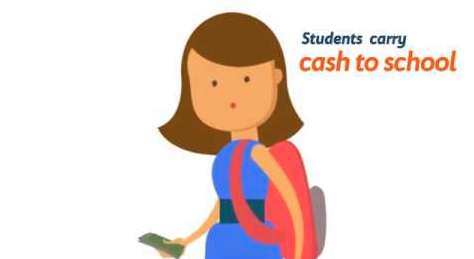Categories(658 Blogs)
Select Category
Watch Right Now
Teacher App - Class
Schedule & Attendance Management App
Parent App from Edsys

Best School Bus Tracking System

Cashless School - For Smart Schools of Tomorrow


Top 12 Classroom Management Tips

Whether you’re a new or experienced teacher, these 12 effective classroom management tips will help you run your class smoothly and will also help to create a positive learning environment for your students.
Free Class Room Activity Apps (Check it Now)
1) Stick to the Rules but don’t be too Strict
Rules and routines help to communicate and also establish the kind of behaviour and discipline you expect from your students. Stick to the rules you create but make sure that the classroom environment does not become too strict and rigid that students feel suffocated.
2) Deal with Misbehaving Students Personally
Ask a misbehaving student to talk to you in person and speak to the student in a calm demeanour. Try to be a friend to them but be firm with what behaviours you would and wouldn’t accept. When you truly get to understand them you might often be able to recognise patterns or issues the child tries to mask up with his/her mischievous behaviour
3) Keep Calm and Carry On
It is important to have control over your emotions to have better control of your classroom. A teacher who loses his/her temper and yells at the students often lose the battle. If a situation gets unruly, try standing in silence and look at your students. This will alert them to a change in your demeanour and will make them aware that something they did was not right. When everyone falls silent you can resume your lessons.
Recommended for You: Tips to Use Technology Smartly in Classroom
4) Connect with your Students on a Daily Basis
An important classroom management tips is to greet your students every morning and at the beginning of class to connect with them on a daily basis and also to set the tone for the day.
5) Build Positive Relationships
To help a student be his absolute best, it is important to wear their shoes and walk a mile in them from time to time. This will help you look at things from the student’s perspective and be empathetic with them. Support them by encouraging them not only in academics but also with their extracurricular activities. This will help build a trusting and honest teacher-student relationship.
6) Reach out to the Parents
While you support a child from school, parents should also be considered as active contributors to a child’s growth. Make sure to not only address the drawbacks but also highlight the positive qualities of the child to his/her parents.
7) Be Interactive and Friendly
Interact with your students and speak to them in simple terms to help them be more comfortable in the classroom. Communicating and engaging them in conversations will boost their confidence and interest in studies.
You may also Like: 10 Simple Steps to Motivate Your Students to Read
8) Change your Teaching Style from Time to Time
classroom management strategy is to adopt multiple instruction methods or styles. Students often lose interest when the lessons are conducted in a mundane manner. Following a singular mode of teaching often leads to a boring classroom session and disengaged students. You can disrupt this routine and keep your students engaged by frequently varying your instruction style.
9) Keep Students Engaged and Involved
It is a challenging task, but if you gain mastery over this your students are less likely to misbehave. Having an engaging classroom session will make the students actively participate in the lessons or task at hand and will prevent their mind from wandering.
10) Keep them Busy
Following up on the point above, you can create engaging classroom sessions by tightening up time management and by staying organized. This will greatly improve classroom culture as well as teaching and learning time.
11) Motivate Students to Work Hard using Rewards
A simple reward system can be a great motivator. The reward could be something that adheres to your school’s policies. It is also important to remind students that help is always available when they need it. Remind them that they don’t have to battle it out alone. Encourage students to ask questions to receive timely advice.
12) Show that you Care
A teacher’s attitude can easily rub off on their students and most often in the wrong way. Make sure to leave your emotional baggage outside of the classroom. If you are feeling any negative emotions like anger, sadness or boredom, make sure that you do not show it to your students. A bad emotion spreads as fast as the flu and your students should be the last one to catch it. As an educator, it is important for you to show that you are happy and excited about the lessons you are going to teach.
Recent Blogs
Our Educational Services
Popular Blogs
Subscribe

SUBSCRIBE TO OUR NEWSLETTER
Sign Up and Recieve the Latest News
Don’t Worry, We Don’t SpamExplore Our Extensive Researched Educational App Directory
Visit Now















